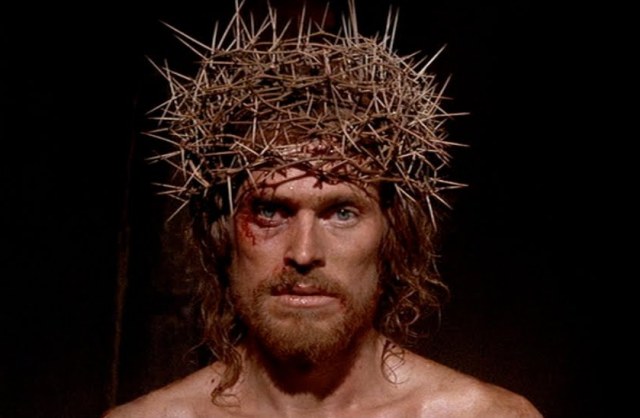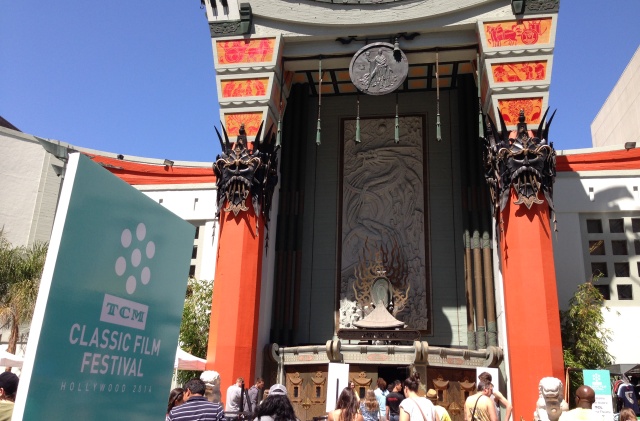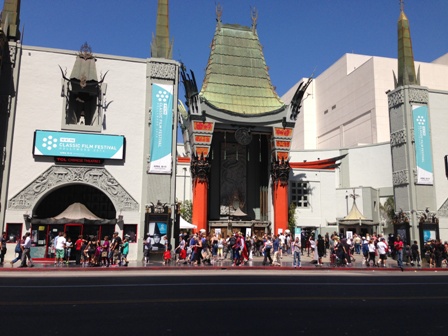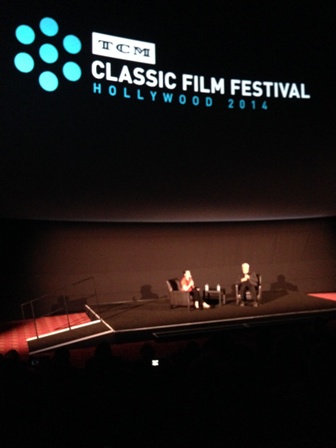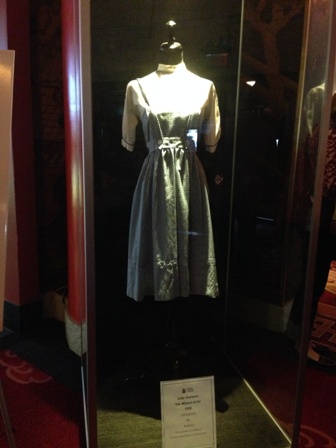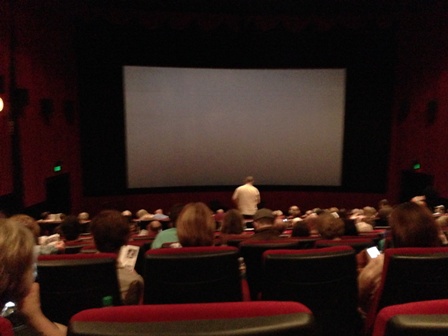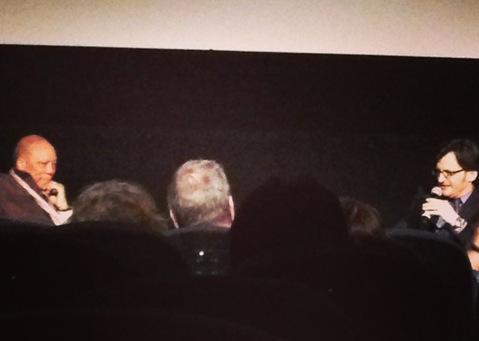Start saving those movie passes now because Summer is almost upon us. Generally seen as the biggest movie season of the year, this is the time when all the major studios gear up their big tent-pole pictures for release. While many movies do become smash hits, recent years have shown us that the Summer is becoming increasingly competitive and now we are more likely to see big movies fail at the box office. 2013 in particular proved to be an incredibly ruthless year for big releases, leading to some of the hardest box office crashes the industry has ever seen. Movies like Star Trek Into Darkness (2013) and Pacific Rim (2013), and Hangover Part 3 (2013) all under-performed last year, while other movies like The Long Ranger (2013), After Earth (2013), and Elysium (2013) proved to be costly failures. Add to this the inexplicable successes of movies that people were almost certain would fail (World War Z and The Great Gatsby), and it becomes clear that the Summer movie season is becoming increasingly harder to handicap. 2014’s Summer season arrives a bit more quietly than last years slate of films, with fewer tent-pole movies of note, which may actually be a blessing for the industry. This year, because of this cleared up schedule, there’s a better chance for movies to actually take hold at the box office and find an audience.
Of course this all depends on how well these movies are received. I for one can see many films coming this Summer that will likely be terrible, and yet successful despite those shortcomings (I’m looking at you Transformers). Just like last year, I will be taking a look at a few of the noteworthy movies that will be premiering in the months ahead and pick which ones that I believe are the must-sees of the season, a few which I’m interested in with a few reservations, and which ones I absolutely believe are worth skipping. To help give some of you a frame of reference to what I’m talking about, I will include movie trailers for each of the highlighted movies. So, without any further delay, let’s take a look at this Summer’s coming attractions.
MUST SEES:
X-MEN: DAYS OF FUTURE PAST (MAY 23)
The X-Men franchise has had a bumpy road over it’s now 7 movie run at the box office. That said, the last two efforts in the series, 2011’s X-Men: First Class and 2013’s The Wolverine have both been solid efforts that both work as stand alone movies as well as continuations of the franchise, showing very clearly that the X-Men movies are now hitting their stride. This year, what looks to be the most ambitious X-Men film to date, Days of Future Past, is making it to theaters and it is the movie I am most excited about seeing this Summer. This is mainly due to the remarkable cast assembled for the film, including just about everyone that has appeared in an X-Men film to date. This includes series stalwart Hugh Jackman as Wolverine, Patrick Stewart and Ian McKellan returning as Charles Xavier and Magneto, as well as James McAvoy and Michael Fassbender as their younger counterparts. Add in Game of Thrones‘ Peter Dinklage as the villain and an army of the iconic Sentinel robots from the popular Marvel comics, and you’ve got a movie that looks to build upon everything that has come before it and take the series into even greater territory. Also, recent controversies aside, it is great to see director Bryan Singer return to a series that he helped to start in the first place; a role he should have never left.
GUARDIANS OF THE GALAXY (AUGUST 1)
Speaking of Marvel Comics adaptations, 2014 also gives us the premiere of one of the publisher’s more obscure titles to the big screen. Fans of the comics already are familiar with the Guardians of the Galaxy, and how they tie in with the larger Marvel universe that’s becoming the central focal point of the popular Avengers series, but the casual viewer does need to be sold on the concept of the story in order to make this film a success. So the marketing behind this film deserves a lot of praise because the above trailer does an absolutely perfect job of setting up the characters and the world of this film. I for one am sold just on the sense of humor alone. What other trailer are you going to see the main character “flipping the bird” at the audience? Space adventures are sometimes a hard sell these days, and while this movie may not look groundbreaking, it does look entertaining, which is exactly what audiences want from a Summer movie. Here’s hoping that Marvel’s track record keeps going strong and helps to give a deserving series the boost that it needs.
GODZILLA (MAY 16)
It’s hard to believe that a Godzilla movie qualifies as a must see movie. The Godzilla franchise is not exactly considered high cinematic art, and the last time Hollywood attempted to make a big budget film centered around the infamous monster, we got the ludicrous 1998 Roland Emmerich film. This year, however, we not only have a Godzilla movie that looks ambitious, but actually looks to be treating the franchise more reverently. Given that Guillermo del Toro proved last year that a movie centered around giant monsters could turn into a great film, it seems reasonable that a new movie centered around the King of Monsters could also be worthwhile. The trailers so far have done an excellent job establishing this new take on the the monster, and the movie does look impressive; particularly when it comes to the scale of the destruction. Also, Godzilla actually appears the way he should, and less like that lame T-Rex hybrid that Roland Emmerich tried to pass off. This film also sports an impressive cast, led by heavyweights like Bryan Cranston and Ken Watanabe. My hope is that the movie is able to live up to it’s marketing, and let the mighty Godzilla roar onto the screens once again.
HOW TO TRAIN YOUR DRAGON (JUNE 13)
For the first time in many years, we are not getting a movie from Pixar Studios in 2014. Almost a staple in the Summer movie season, Pixar films are among the most consistently successful movies released every year. So, with such a vacancy left open, it seems like a prime opportunity for other animation studios to release one of their movies without having to compete with the big boys, and the studio best set up to make a move this Summer is Pixar’s most direct competitor: Dreamworks Animation. This is because Dreamworks is premiering a sequel to what is unquestionably their best film to date, 2010’s How to Train Your Dragon. The sequel looks to expand the universe seen in the first film, which is what a good sequel should do, and the trailer does a good job of showing off the impressive scale and action adventure that we expect to see in a movie like this. The first film’s entire cast looks to be returning to the series, and some of the notable new additions include Oscar-winner Cate Blanchett as the main hero’s long lost mother, as well as actors Djimon Hounsou and Game of Thrones’ Kit Harington as new adversaries. The hope is that the sequel doesn’t waste the potential set up by it’s excellent predecessor. It certainly benefits from ideal conditions for it’s world premiere with little competition in it’s way.
THE EXPENDABLES 3 (AUGUST 15)
Yes, I know these movies are loud and dumb. But, that’s why I like them so much. Sylvester Stallone has crafted the Expendables series as a love letter to 80’s action films and has filled each movie with many of his old co-stars from that era, along with every action star that has headlined a film since then. What I like about these movies the most is that they make no qualms about what they really are; they are a showcase for action movie icons doing what they do best and that’s kicking ass and blowing stuff up. Now that the series is on it’s third film, it’s clear that many other people like me have gone along on this ride and have loved it so far. The first two movies are mindless fun, and it looks like the new movie is more of the same, which is very much welcomed. In addition to the returning cast, which includes Stallone, Jason Statham, and the “Governator” Arnold Schwartzenegger, this new film adds many more action icons like Antonio Banderas, Wesley Snipes, Mel Gibson, and Dr. Jones himself, Harrison Ford, taking the place of the absent Bruce Willis. The new cast members alone are enough to get me excited for this movie. It’s guilty pleasure fun and I’m not ashamed to be excited about this one.
MOVIES THAT HAVE ME WORRIED:
THE AMAZING SPIDERMAN 2 (MAY 2)
The first movie released this summer is almost certainly going to be a huge hit and it looks like it’s going to be a huge crowd-pleaser. So why am I not as excited about it as most people. It’s mainly because it ‘s a sequel to a film that I didn’t like. The first Amazing Spiderman was released in 2012, and rebooted the Spiderman franchise only five short years after the previous series ended; the one that starred Tobey Maguire as the web-slinger. While I do believe that the reboot did some things right, like casting Andrew Garfield as Spiderman and focusing more on his development as a character, the end result was too lackluster and inconsistent in tone to make the reboot worth it. Also, the film needlessly retreaded the origin story, which everyone had already seen in the previous films. While this movie is freed up from the shackles of establishing the origin of Spiderman, it runs the unfortunate risk of trying to cram in too much too soon. This movie has no less than 3 different villains taken from the comics; Electro (Jamie Foxx), The Rhino (Paul Giamatti) and the Green Goblin (Dane DeHaan). Hopefully the movie gives everyone their due, otherwise it could all be a mess. That being said, the film’s action set pieces do look exciting, and the transformation of Jamie Foxx into Electro does look impressive. Let’s hope that this movie can outshine it’s disappointing predecessor.
MALIFICENT (MAY 30)
Disney seems to recently be in the habit of adapting some of their most beloved animated films into live action movies. It started with 101 Dalmatians in 1996, starring Glenn Close as Cruella de Vil. A decade later we saw Tim Burton’s take on Alice in Wonderland (2010). And within the next couple years, we will see adaptations of Cinderella by Kenneth Branaugh and The Jungle Book by Jon Favreau, both from the Disney company. This year, we get the live action treatment of Sleeping Beauty (1959), but with a twist. This version of the tale gives the villainess, the iconic Malificent, center stage, and she is played by non other than Angelina Jolie. The reason why I’m uncertain about this film is because the recent track record for fairy tale adaptations hasn’t been so good, at least when it comes to the quality of the movies. Tim Burton’s Alice was critically panned, as was two recent adaptations of Snow White, made by other studios. Audiences and critics may generally reject this movie as more of the same, and certainly the CG heavy look of the film seems rather tiresome. The bright spot, however, is the casting of Ms. Jolie herself in the title role. She looks perfect for the role and seems to be relishing the part in her performance. And if there’s a Disney villain who deserves her own film, it’s the mistress of all evil.
JUPITER ASCENDING (JULY 18)
The Wachowskis have had a rough decade. They exploded onto the scene with the monumental The Matrix (1999), which is a certifiable classic in every way. Since then, they followed that up with two disappointing Matrix sequels, a horrid remake of Speed Racer (2008), and the ambitious Cloud Atlas (2012), which worked better in parts than as a whole. Having not made a profitable film since 2003’s The Matrix Reloaded, there is a lot resting on the Wachowskis’ shoulders with their new movie Jupiter Ascending. The movie looks ambitious, and it’s nice to see the Wachowskis’ take on a sci-fi thriller that doesn’t echo The Matrix in any way. The only question is whether their movie is original enough to convince audiences to see it. I like the look of the movie, but the “saving the princess” plot seems a little cliched, even within science fiction. On the plus side, the movie has Sean Bean in the cast, which is a good thing in my book. Let’s see if he stays alive through the whole film this time. Hopefully this one will be a turn around for the once mighty Wachowskis, because they certainly need it.
SIN CITY: A DAME TO KILL FOR (AUGUST 22)
Robert Rodriguez’s first adaptation of Frank Miller’s Sin City graffic novels was one of the most unique cinematic experiences I’ve ever had when it first premiered back in 2005, and it seems like an ideal film to follow up with a sequel. I also thought the same thing of Rodriguez’s Machete (2010), but that was until I saw Machete Kills, one of the more disappointing sequels in recent memory. Now, nearly a decade after the first film was released, Robert Rodriguez is making the long promised follow-up to Sin City. The reason why I’m worried is because Rodriguez’s track record with sequels is very spotty. For every Desperado (1995) there’s a dozen lackluster Spy Kids movies. Hopefully the director brings his A-game to this film, because I absolutely love the first movie. The good news is that much of the original cast returns, including heavyweights like Mickey Rourke and Bruce Willis, and newer cast members include good actors like Josh Brolin and Joseph Gordon-Levitt. Let’s hope that time hasn’t worn out Sin City’s appeal to audiences.
MOVIES TO SKIP:
TEENAGE MUTANT NINJA TURTLES (AUGUST 8)
The vultures are already circling around this one. Pretty much from the get go, people knew this was a bad idea, letting Michael Bay tackle a popular property like this one. And now that we’ve seen the trailer, our worst fears seem to have been realized. While I’m mixed on some things about this movie (I like the casting of William Fichtner as Shredder, for example), I do agree that the titular turtles just don’t look right at all. I greatly prefer the Jim Henson crafted turtles from the cheesy but endearing original film. Additionally, nothing good can come from the casting of Megan Fox as female lead, April O’Neil. Right now, this movie stands as a clear example of the recent trend by Hollywood to take popular franchises from a generation ago, and water them down into shallow popcorn flicks for today’s newer audiences (i.e. Robocop). Is this going to be the worst movie of the summer? Who knows. I can only say that it’s the one right now with the lowest expectations.
TRANSFORMERS: AGE OF EXTINCTION (JUNE 27)
While we’re on the subject of Michael Bay, he also is bringing us the fourth entry in the Transformers franchise this Summer. I will say that I did find the first film okay in it’s own right, but the series has devolved into one of the most self-indulgent and obnoxious franchises of recent memory. These movies seem more geared towards satisfying Bay’s own tastes as a filmmaker than actually entertaining the audiences they were intended for, with it’s over-reliance on CGI mayhem and on-screen pyrotechnics in the place of actual character development. This movie does the smart move of replacing Shia LaBeouf for the less obnoxious Mark Wahlberg, but after watching the trailer, it appears that we’re still going to be getting more of the same nonsense. And once again, it looks like the Transformers themselves are just supporting characters in their own movie.
EDGE OF TOMORROW (JUNE 6)
This film’s biggest disadvantage is that it’s been produced at a time when many stylistically similar movies are being made; and failing. It looks too similar to forgettable sci-fi action thrillers like Battle Los Angeles (2011), and those battle suits look a lot like the mech-armors used in Elysium (2013); and you guys know how I felt about that film. Hell, it was only last year that we saw another post-apocalyptic movie starring Tom Cruise; the equally forgettable Oblivion (2013). Unfortunately for this movie, it and will probably follow in the footsteps of these other failed sci-fi epics. Tom Cruise is a good actor, and he should be broadening his choices of roles now that he’s entering middle age, but it appears he’s still attracted to action film roles at the moment, for better or worse. The plot also seems too gimmicky to stand out either; like a mix of Halo and Groundhogs Day (1992), and not in a good way. It could end up surprising us and be a solid action movie (like last years World War Z), but given how poorly the sci-fi action genre has been of late, it’s a tall order to accomplish.
So, there you go; my outlook on the Summer of 2014 in movies. There will probably be a few other films that will grab my attention over these next few months, and probably even a few surprises. That was certainly the case with last Summer’s movies, and hopefully this year will be even better. I hope that the fact that fewer movies are coming out this year with a lot of hype is a positive thing. Lately, too much hype has negatively affected many people’s reactions to Summer movies, so hopefully Hollywood has been taking a hint and are acting more cautiously this year. I doubt we’ll see anything like The Lone Ranger’s big meltdown this Summer. My hope is that the movies I’m most excited about live up to my expectations, and the ones I’m cautious about will prove my worries wrong. At the very least, I hope that I and everyone else just has a fun time at the movies during this busy season and not end up feeling like we wasted our time and money at the cinema.

